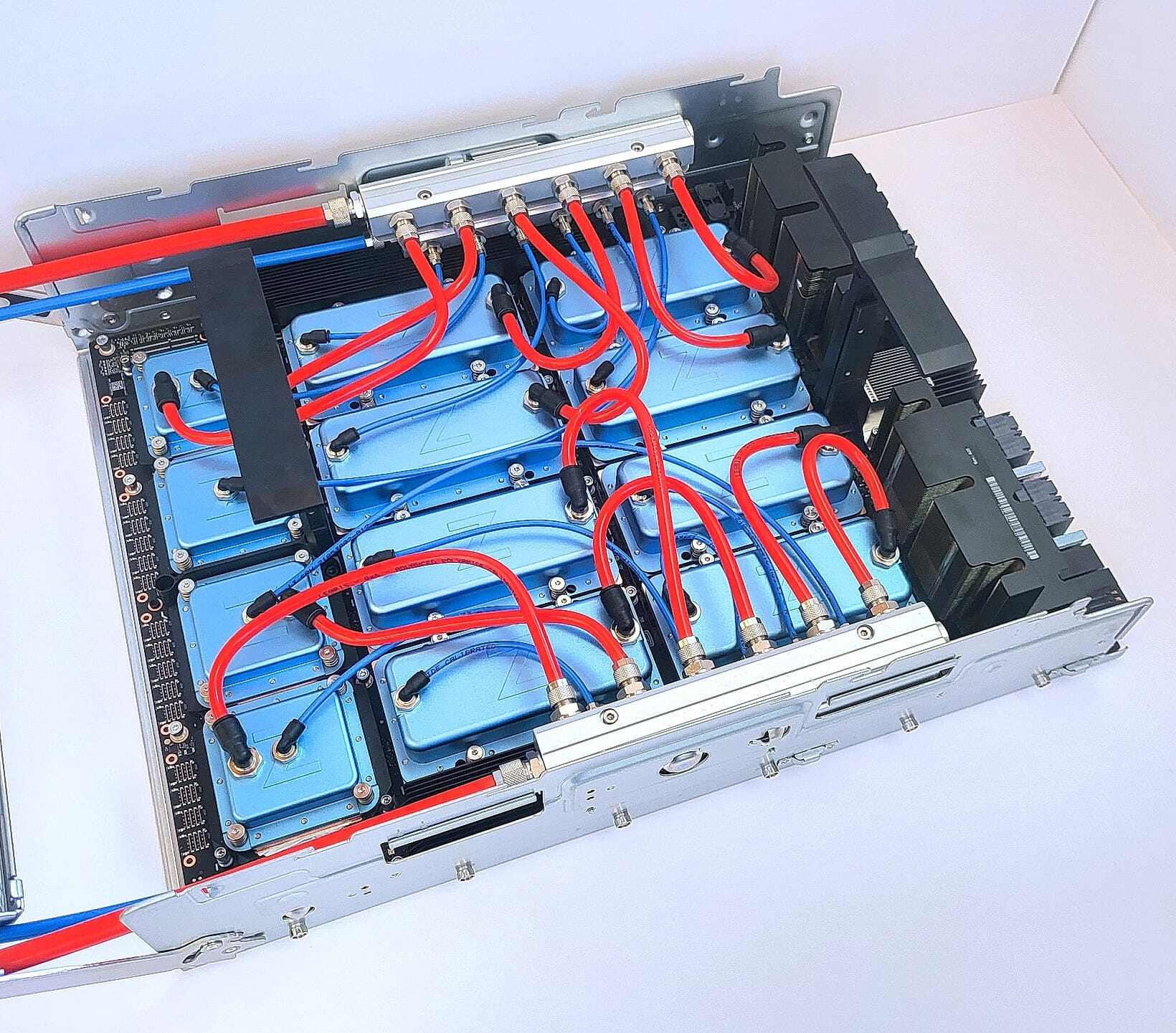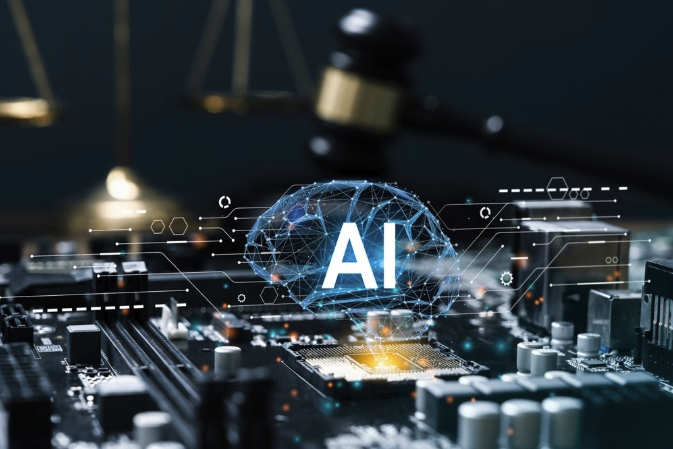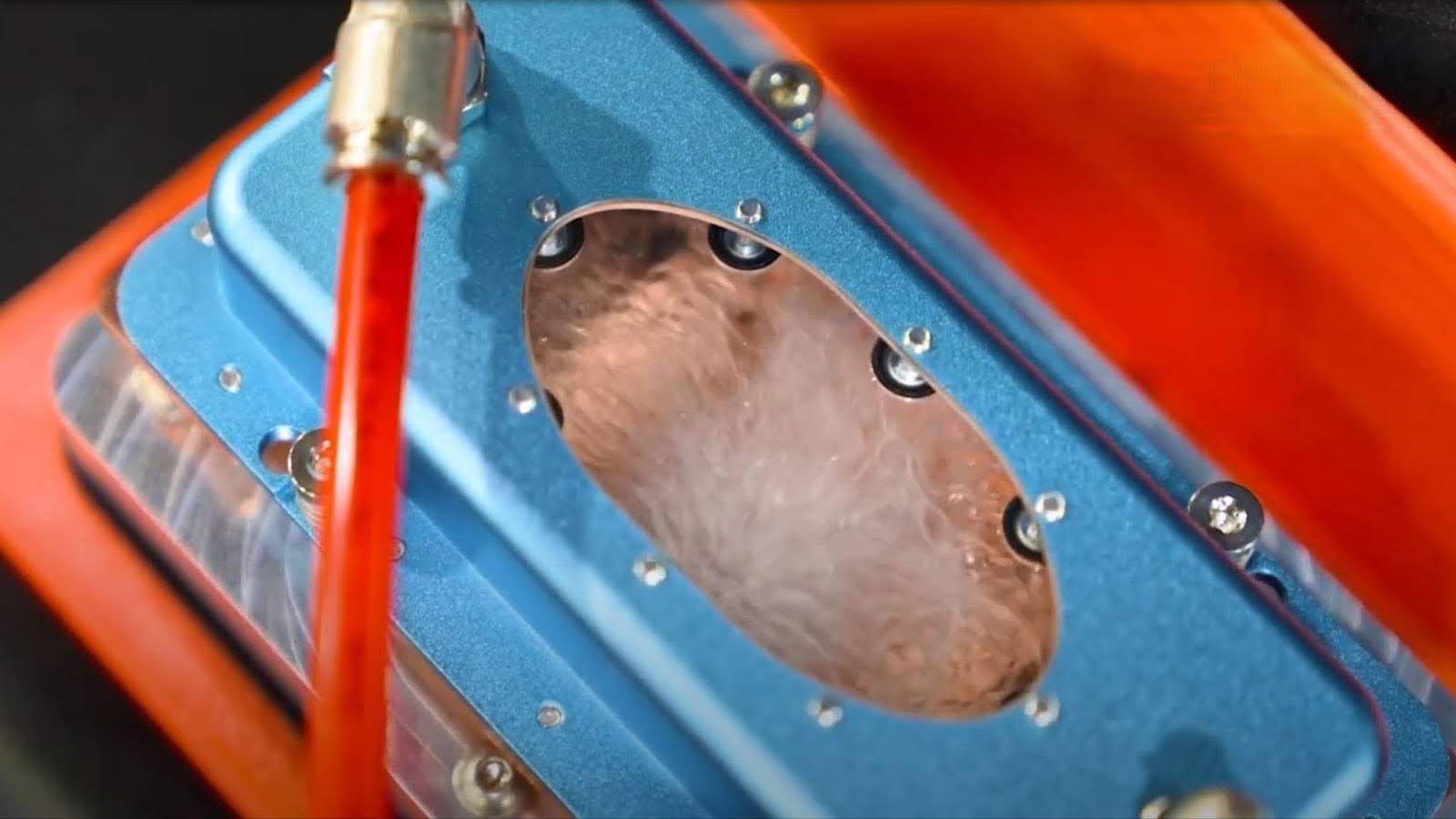1 min read
Unlocking the Future of AI Cooling: Two-Phase, Direct-to-Chip Liquid Cooling
As AI superchips push the boundaries of power and performance, the heat they generate is becoming a critical challenge for data centers. With...
7 min read
 Alison Deane
:
Feb 19, 2025 9:08:43 AM
Alison Deane
:
Feb 19, 2025 9:08:43 AM

Modern data centers are being pushed to their limits. AI, high-performance computing (HPC), and advanced workloads have made traditional cooling systems obsolete. With individual processors now able to operate at 2,800 watts (and beyond), data center heat generation has skyrocketed. The result? Power consumption has, too. New and immense power draws for cooling have laid bare the shortcomings of legacy air and water cooling infrastructure. Air can’t keep up. Water is simply too expensive, risky, and demanding on space and resources.
The waterless, direct-to-chip HyperCool® liquid cooling system from ZutaCore® is the solution. Purpose-built for AI factories and high-density computing, HyperCool eliminates the risks and inefficiencies of water-based systems while unlocking unmatched performance and sustainability.
Let’s dive into how and why HyperCool has quickly set the bar for data center cooling that meets the demands of today’s technology.

As AI and HPC workloads grow, data center operators face at least five critical challenges:
The International Energy Agency predicts that global data center power usage could double by 2026, driven largely by AI. Hotter processors, like NVIDIA’s Grace Blackwell chips, demand unprecedented cooling capabilities. Air cooling simply cannot keep up.
Hyperscale data centers are experiencing unprecedented heat loads. Without effective heat rejection and dissipation, facilities risk hotspots, inefficiencies, and performance degradation. HyperCool addresses this with configurable heat rejection units that support 100% heat reuse. Facilities can repurpose waste heat for district heating or industrial processes, as needed. As a result, net zero data centers are still on the menu, even in the era of AI.
Modern data centers must maximize compute density within limited footprints. HyperCool triples processing capacity while reducing energy use by 50%. Its low-profile design fits within 1U dimensions, enabling seamless retrofits and high-density configurations.
With public scrutiny on carbon footprints and water scarcity, data centers must adopt greener practices. HyperCool eliminates water usage entirely while reducing energy consumption by up to 80%. Its closed-loop system supports zero-emission, net-zero energy data center strategies.
Air-cooled systems consume vast amounts of energy and require significant physical space. As processors grow hotter, air cooling becomes inefficient, leading to hotspots and performance degradation. The direct-to-chip HyperCool solution eliminates these shortcomings while using half the space and 80% less energy than air cooling.

A new approach to cooling technology can solve all five of the main challenges faced by modern data centers and AI factories. HyperCool flips the script on those struggles by integrating four core features:
Unlike water-based systems, HyperCool uses a non-toxic, non-conductive heat transfer fluid. In the unlikely event of a leak, the fluid evaporates harmlessly into the air without damaging IT hardware or harming the environment. Operators eliminate the risks of corrosion, mold growth, or catastrophic downtime normally tied to (water-based) liquid cooling.
A closed-loop liquid cooling system keeps the fluid contained within a sealed environment. This dramatically reduces the need for frequent maintenance, since the fluid retains its integrity indefinitely without contamination and doesn’t exit the system via evaporation.
Two-phase systems are a leap forward from traditional single-phase cooling. Instead of relying solely on liquid to absorb heat, the fluid evaporates into vapor upon contact with the processor. The vapor then condenses back into liquid within a heat rejection unit (HRU), completing the cycle. This phase change significantly improves cooling efficiency.
Direct-to-chip cooling applies the heat transfer fluid directly to the processor surface. By targeting the hottest part of the server—the CPU or GPU—this method extracts and dissipates heat quickly and evenly. Direct-to-chip cooling maximizes performance while eliminating the need for bulky fans, heat sinks, and inefficient air systems.
Compared to immersion cooling, which requires hundreds of gallons of fluid, HyperCool operates with less than 4 gallons of heat transfer fluid. Its compact footprint and low-pressure design make it ideal for high-density, modern data centers.
The HyperCool system delivers exceptional cooling performance through its modular and scalable design. Its key components work seamlessly to manage extreme heat loads, ensuring maximum efficiency, safety, and reliability for AI, HPC, and densified workloads.

HyperCool cold plates deliver direct-to-chip cooling to the hottest parts of the server—the CPUs and GPUs—from leading manufacturers, including Intel, AMD, and NVIDIA. With a non-toxic, waterless heat transfer fluid, the cold plates efficiently extract heat without the risks associated with water-based systems.

Our HRUs are responsible for condensing the vaporized fluid back into liquid form in a closed-loop cooling cycle. Available in air-based and water-based options, HRUs offer flexibility to meet the needs of any data center environment.

The manifold acts as the central hub for fluid delivery and heat transport. It seamlessly integrates with server racks for uniform thermal management.

The Software Defined Cooling platform provides real-time monitoring and automated optimization to ensure peak system performance.

HyperCool transforms data center economics and environmental impact. Measurable savings and ambitious sustainability goals are within reach via a simple retrofit or easily scalable system for new data center construction.
HyperCool reduces energy use, operating costs, and infrastructure requirements, ensuring rapid ROI and long-term financial benefits.
Scale seamlessly, accommodate growing workloads, and increase profitability without expanding square footage or power usage.
Unlike water cooling, the waterless heat transfer fluid behind HyperCool delivers unmatched efficiency, safety, and performance in a compact package.
HyperCool makes it possible for even the most advanced AI facilities to reduce emissions, conserve resources, and achieve net-zero goals.

A 2MW data center is under immense pressure to keep pace with rising AI and HPC demands. A series of NVIDIA GB-equipped server racks have come online, and the heat they generate is unlike anything the facility has dealt with before. Operational costs are climbing, energy consumption is surging, and sustainability targets loom overhead.
The facility’s manager has looked into upgrading air-cooled systems, but they couldn’t handle the heat loads efficiently. Immersion cooling was also taken into consideration, but it would take extensive infrastructure changes and costly maintenance.
By implementing HyperCool, this 2MW facility transforms into a high-efficiency powerhouse:
In this realistic scenario, the data center finds rapid ROI, immediate scalability, and a clear path to meet AI-driven workloads, all without compromising on performance or environmental goals. HyperCool has done more than cool. It has effectively future-proofed the data center.
Scenarios like this are not just theoretical; they’re already happening. Explore the real case study of the University of Münster’s implementation of HyperCool to see how it helped deliver the most computing power for the University’s money. Extensive tests by Storage Review — performed at the Centersquare Data center in Reading, Berkshire, UK, on a Supermicro server with dual AMD EPYC Bergamo CPUs — have also showcased the data-driven potential of HyperCool to push hardware to its limits.
 The Next Step: Transform Your Data Center With HyperCool
The Next Step: Transform Your Data Center With HyperCoolThe time for incremental improvements has passed. AI, HPC, and high-density workloads require a revolution in cooling technology. HyperCool delivers the performance, reliability, and sustainability that modern data centers need to thrive.
Are you ready to redefine your data center? Connect with ZutaCore today to learn how HyperCool can maximize your compute density, reduce operational costs, and achieve net-zero sustainability goals. Together, we can build a future where data centers drive progress without compromising the planet.

1 min read
As AI superchips push the boundaries of power and performance, the heat they generate is becoming a critical challenge for data centers. With...

3 min read
Demand for digital infrastructure is skyrocketing, driven by the rise of artificial intelligence and HPC in data centers. However, this surge has...

3 min read
As servers push the boundaries of power and processing, cooling systems must evolve to handle the heat. Traditional air cooling systems, which rely...